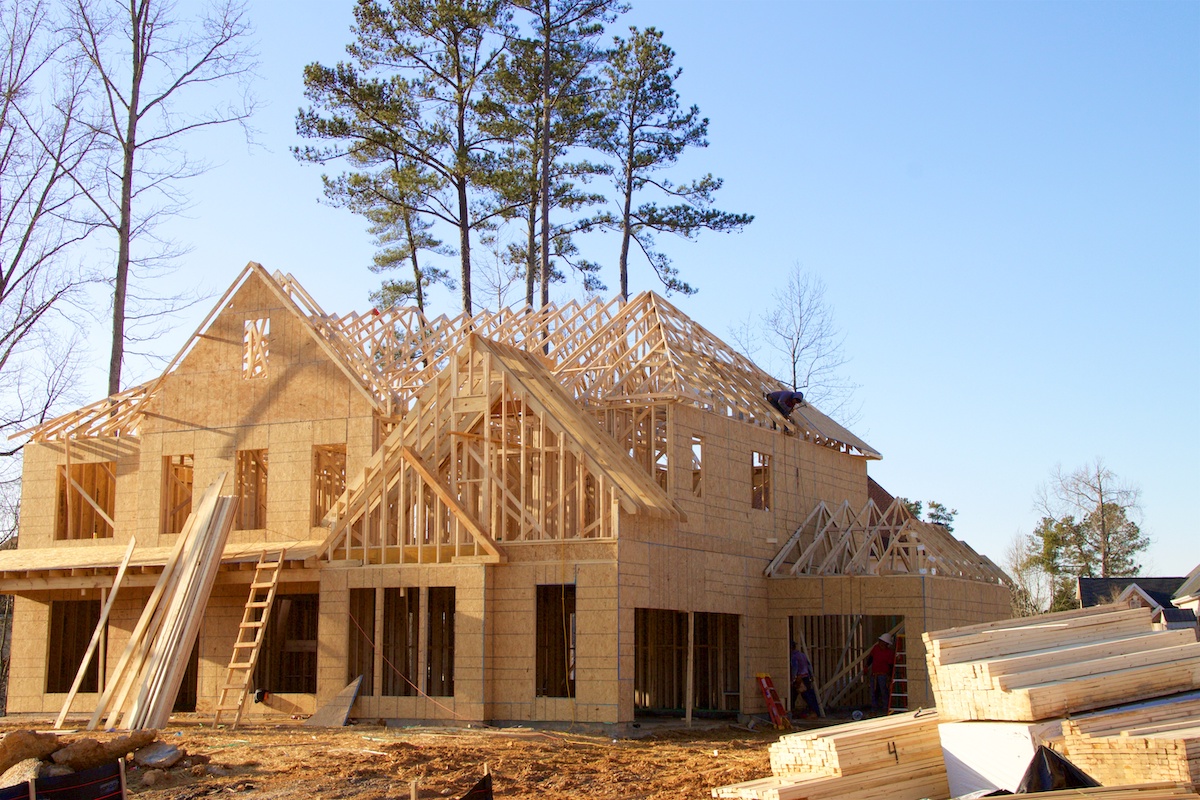
(GA Recorder) — Legislators in Georgia could soon consider a bill to make first-time homebuyers’ homes more affordable as the entry-level housing market continues to price out many middle- and lower-class families.
Rep. Dale Washburn, a Republican from Macon, plans to introduce a bill soon to reduce some of the control of local governments to regulate housing design standards, which critics say can add to the cost. Local government organizations, however, oppose the controversial plan that they argue unfairly takes away local control while not resolving a demand for housing that greatly exceeds the supply.
Washburn chaired a House study committee that spent several months last year hearing from experts in housing, business and government leaders on how to build more homes for a growing labor force that’s getting squeezed out.
Washburn said his legislation will change the state building code to lower minimum lot sizes and square footage requirements, as well as some of the costs associated with sewer and water installation.
As Georgia’s population grows and more manufacturing and other jobs open up, it’s important to fill a widening homeownership gap so that generations of families can prosper, he said.
According to Zillow.com, the state’s average home price is $324,799, up 15% over the past year.
“I am all about freedom for Georgians to choose whether they want to buy or to lease,” Washburn said. “But I am also in favor of having the freedom to be able to buy a house at a certain price rather than be closed out of the homeownership market because of larger square foot requirements or concerns about construction design standards that go beyond health and safety.”
Clint Mueller, executive director of the Association County Commissioners of Georgia, said the design standards shouldn’t be relaxed to allow builders to build cheap housing that doesn’t stand the test of time.
“We don’t want them just building it, selling it off and all of a sudden two or three years later, it’s being rented out by some institutional investor that bought it at an affordable rate,” Mueller said. “We’d like there to be some claw-back provisions in these zones where it says OK, if we allow for certain governmental incentives, tax incentives and other things, then we expect the project to be built to meet our definition for affordable housing and stay for a period of time.”
The association that represents Georgia’s 159 counties, along with the Georgia Municipal Association, plans to make legislative recommendations this month that could include offering incentives such as eliminating sales taxes on materials used to construct homes or helping developers offset some of the costs associated with setting up sewer, water lines, and roads, which can add up to $100,000 per residential property in big cities like Atlanta.
The way homes are built is important to local governments since there are different standards for historic districts. And it might be a bad idea to have a subdivision of homes only with vinyl siding if they are built so closely together that it becomes a dangerous fire hazard, Mueller said.
The debate about housing and zoning should be handled on a local level by city and county officials who are closest to their residents, he said.
“You can’t have that discussion or debate here at the state level because anything that the state does, it’s got to be a one size fits all statewide,” Mueller said.
Georgia’s population boom over the past several decades was due to the fact people could afford housing and a better quality of life overall on the same salary that they made in other cities. But as housing prices continue to rise faster than people’s salaries, driven by demand and high inflation, housing experts say that affordability is becoming a thing of the past.
As a priority for his final term, Republican Gov. Brian Kemp has proposed setting aside $36 million intended to assist rural communities in cutting down on the costs tied to residential infrastructure like roads and wastewater treatment for new houses located near large manufacturers like the proposed Hyundai plant in Bryan County and a recently announced solar battery facility in Bartow County.
Additionally, the state is providing a quarter billion dollars in bonds to finance loans for the construction of low and moderate income workforce housing. State tax credits are going toward financing a multifamily housing complex six miles from the Hyundai plant planned near Savannah.
Washburn said his bill would not require private developers to adhere to certain requirements on vinyl siding, bricks, or house sizes.
“We do know that if local government requires larger homes to be built then obviously that price will be higher,’ Washburn said. “We also know that a big, big cost for housing is the underlying land and we are trying to be sure that we are not requiring lots to be larger than they need to be single-family homes.”
The conservative-leaning Georgia Public Policy Foundation has advocated for less government regulation for housing.
The foundation’s president and CEO, Kyle Wingfield, said government fees and other regulations are preventing more moderately priced homes from being built.
A statewide survey sponsored by the Georgia Public Policy Foundation and the National Association of Home Builders trade group found government regulations that are 4% higher than the national average in Georgia and account for 27% of the price of a new single-family home.
Wingfield said that decisions made must not just be about what’s advantageous to the builders and developers but also buyers who have to be willing to purchase something at a price that makes sense in the marketplace.
The local building and zoning standards set for the construction of new homes is a government mandate that primarily covers the exterior of a home, Wingfield said.
“I don’t think we would get into the government mandate that says every house has to have granite countertops, has to have hardwood floors, or every house can only have 50% of their floor covered in carpet,” Wingfield said. “But when it comes to the exterior of the home, we sort of have come to accept that this is a legitimate thing for the government to do. We just think it’s time to recalibrate that and let more of the people, not just builders but buyers with their preferences, set those standards.”
A “carpenter index” developed by the center-right American Enterprise Institute think tank in Washington, D.C. has become a yardstick for the blue collar workers’ ability to purchase a home across the nation.
Relaxing some of the restrictions on building designs is just one piece of the puzzle to address housing affordability, Wingfield said.
“We believe in local control,” Wingfield said. “We also believe in private property rights and when it comes to this issue, there’s some tension between the two.”
“Our preference would be to see local governments work on their own to strike a better balance between those two,” Wingfield said. “It will probably be kind of a blunt instrument, if it’s a state law, trying to tackle that between city and counties. I think we have about 700 local governments in the state, you’re going to have some kind of uneven effects.”
One of the factors driving up mortgage and rental prices is the large number of entry-level properties snapped up by corporations and mom-and-pop investors.
“It’s kind of a double whammy,” Mueller said. “There are people that want to own who can’t compete with the investor and they’re stuck renting from those investors who then cornered a larger piece of the market and raised the rents on them.”
Washburn said that under the bill, a private developer can still impose deed restrictions that require houses and lots to be of certain size and follow other standards.
“No one is trying to do anything to keep that from happening if a private developer wants to do that, but there’s a difference between that and then a local government requiring that of every home in the county or in the city,” he said.







